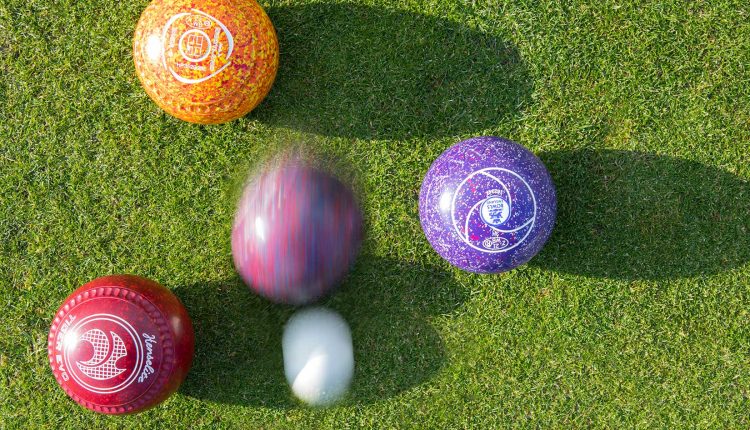‘Change Your Hand! No…Change to Your Other Hand!’
AUG 2013 edition
To start this month’s article I had an interesting e-mail from Derek Place, who asked the following questions:
Is a player allowed to bowl right handed with one bowl and then change to their left hand for another during the same match? Furthermore, is it legal for a player to deliver a bowl double handed, with a cupping action?
Having looked at the World Indoor Bowls Council Laws of the Sport of Indoor Bowls I cannot find anything which makes either illegal. Under the ‘Definitions’ law, 1C ‘Play,’ it states:
(i). Delivery means when the jack or bowl is intentionally released in the process of play.
Looking at the World Bowls Laws of the Sport I could rule the two handed delivery as illegal because the Definition of ‘delivery’ is slightly different and reads as follows.
Law 1.3 Play
1.3.2. Delivery: deliberately releasing a jack or a bowl from the hand using an underarm movement. If the jack or bowl accidentally slips from the player’s hand during delivery, the player can pick it up and start the delivery again.
Apart from the second sentence which is not included in the WIBC version, the important word is ‘HAND,’ ‘releasing a jack or bowl from the HAND.’ It does not say ‘hands’ so a double handed delivery would be regarded as illegal.
Spotting Trouble on the Horizon
I have received a number of questions asking about the marking of an indoor green with regard to spots and re-spotting of the jack. One such request came from Mr Lee of Pershore, Worcestershire, who wrote the following:
“I was wondering if you could give me some advice on the marking of an indoor rink. We wish to introduce the re-spot for the jack and would like some measurements if possible.”
Before going onto re- spotting, I will explain the traditional method of placing spots down the centre of the rink.
1. Run a string down the centre of the rink, making it secure at both ends of the rink.
2. Using a measuring tape, mark the two metre mark from the ditch end and either place a spot or a ‘T’ onto the surface of the green. For those of you who watch World Bowls Tour Events on TV, its distance is three metres.
3. From your first spot or ‘T,’ using the measuring tape, place spots at one metre distances down the centre line until you reach the 25 metre indicator placed on the side bank. The distance of the last mark will depend on the length of your green.
4. Repeat the exercise at the opposite end of the rink and remove the string. There should not be any spots between the 25 metre marks.
The law relating to this can be found in the World Indoor Bowls Council Laws of the Sport of Indoor Bowls law 5 (ix) ‘Division of the Green’ section.
Moving onto re-spotting, there are a number of variations on where the re-spot marks should be so if you are umpiring please check with the Controlling Body as to what rules apply so you know what you are looking for when you check the measurements of the green.
At World Indoor Bowls Council events, the spots are placed in line with the two metre ‘T’ and equidistant between the centre line of the rink and the rink boundary markers.
At World Bowls Tour events, where the ‘T’ is placed three metres from the ditch the re-spots are set back 300mm from the ‘T’ so they are in fact 2.7 metres from the ditch and equidistant between the centre line of the rink and the rink boundary markers.
So how do we go about marking the position of the spots?
1. Run a string across the green, two metres from the ditch. If you have marked your ‘T’ correctly, the string should run across the ‘T’ on all rinks on the green.
2. Using the measuring tape, measure the distance between the rink boundary mark and the centre line of the rink. Divide the distance by 2 and place the spot. For example, if your rinks are 4.8 metres wide, the distance between the rink boundary mark and the centre line of the rink will be 2.4 metres. You then divide this by two, which comes to 1.2 metres. So, the spot will be placed at 1.2 metres from the ‘T’ and the rink boundary mark.
3. Repeat the exercise at the opposite end of the green and remove the string.

